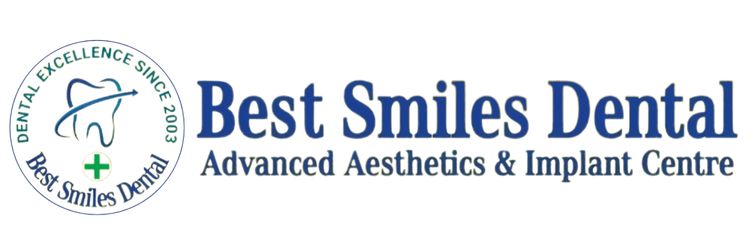Wisdom Tooth Extraction (Impacted Tooth Removal)
Wisdom Tooth Extraction (Impacted Tooth Removal)
Need Appointment ?
Wisdom Tooth Extraction (Impacted Tooth Removal)
You might need wisdom tooth extraction if your wisdom tooth cause pain, grow in crooked or result in other oral health issues. Sometimes dentists recommend removing of wisdom teeth preventively, before issues have a chance to develop. This common oral surgery procedure takes about an hour to complete. Full recovery takes about two weeks.
Book Appointment to find out which treatment might be best for you at Best Smiles Advanced Dental Clinic.
What is wisdom tooth extraction?
Wisdom tooth extraction — is a common oral surgery procedure. Dentists may recommend this treatment to preserve your oral health and protect your other teeth from possible issues in the future.
Your wisdom teeth — also called third molars — are in the very back of your mouth. Typically, they erupt sometime between the ages of 17 and 25.

Why wisdom tooth is extracted?
You might need wisdom teeth extracted if you:
- Have one or more impacted wisdom teeth. (“Impacted” means partially or fully trapped in your gums or jawbone.)
- Have wisdom teeth that grew in crooked or sideways.
- Develop pain near the back of your mouth.
- Trap food and debris around your wisdom teeth.
- Develop gum disease, particularly around your molars.
- Have tooth decay (cavities) in a partially erupted wisdom tooth.
- Develop a cyst (fluid-filled sac) around one or more wisdom teeth.
- Have damage to nearby teeth or surrounding bone.
In many cases, dentists recommend wisdom teeth extraction as a preventive measure. As a result, your dentist may suggest removing your wisdom teeth even if you don’t have any symptoms. This can help reduce your risk for future problems, including infection and tooth decay.
What happens during wisdom tooth extraction?
The day of your procedure, your surgeon will:
- Give you anesthesia to numb your teeth and gums and keep you comfortable. (If you choose sedation, they’ll give you sedative medications, as well.)
- Make incisions (cuts) in your gums, if necessary, to expose teeth trapped in your gums or jawbone.
- Carefully loosen your wisdom tooth and lift it from its socket. (They may need to divide your tooth into sections for easier removal.)
- Clean the area to make sure there’s no infection.
- Place stitches to close the surgical site, if necessary.
- Place gauze over the sockets to slow bleeding.
When should I see a dentist for wisdom teeth?
Visit a dentist if you experience:
- Persistent pain in the back of your mouth.
- Swelling or redness around the gums.
- Difficulty opening your mouth fully.
- Bad breath or an unpleasant taste in your mouth.
What should I avoid after wisdom tooth extraction?
- Avoid smoking or using straws, as suction can dislodge the blood clot.
- Refrain from vigorous rinsing or spitting for the first 24 hours.
- Don’t consume alcohol or hot beverages that can irritate the surgical site.

Pain-Free Dentistry
Comfortable, stress-free treatments every time.

Next-Gen Equipments
Precision care with advanced technology.

Expert Care Guaranteed
Trusted specialists for superior oral health.
Frequently Asked Questions
Discover everything you need to know about professional tooth cleaning and polishing. Learn how it removes plaque, enhances your smile, and promotes better oral health.
The procedure is performed under local anesthesia, sedation, or general anesthesia, so you won’t feel pain during the extraction. Mild discomfort and swelling after the procedure are common, but these can be managed with painkillers and ice packs.
Recovery typically takes 3–5 days, with swelling and discomfort subsiding within a week. Most patients can resume normal activities after a couple of days, but complete healing of the surgical site may take 2–3 weeks.
Stick to soft foods for the first few days, such as:
- Soups and broths.
- Mashed potatoes or soft rice.
- Yogurt, smoothies, or pudding.
Avoid hard, crunchy, or spicy foods until the area heals.
Stitches may be needed depending on the complexity of the extraction. In most cases, dissolvable stitches are used, which naturally fall out within a week or two.
The cost varies depending on factors such as:
- Whether the tooth is simple to extract or impacted.
- The type of anesthesia used.
- The clinic’s location and expertise.
On average, it ranges from ₹2,500–₹10,000 per tooth in India.

